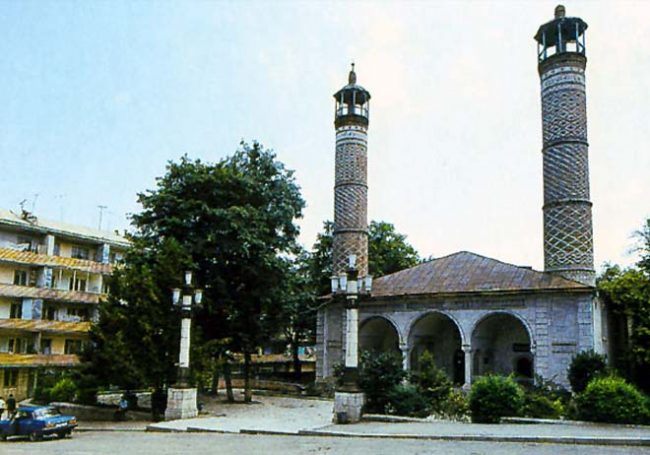
Twenty-six years have passed since the occupation of Azerbaijan’s Shusha city by Armenia.
Shusha, one of the unique cultural centers of Azerbaijan, is a city, characterized for its natural beauty, and is a valuable monument of national architecture and medieval urban art. Constantly keeping the Azerbaijani national-spiritual values and traditions of music, Shusha before forming as a city of great economic, political and cultural significance, has passed a rich way as a center of Karabakh khanate, played its role in the lives of the people of Azerbaijan. This city, which went down in history thanks to Gasim bey Zakir, Khurshidbanu Natavan, Mir Mohsun Navvab, Najaf bey Vezirov, Abdurrahim bey Hagverdiyev, Yusif Vazir Chemenzeminli, Firidun bey Kocharli, Ahmad bey Agaoglu and other eminent personalities, is known worldwide as the cradle of the Azerbaijani mugham.
In 1977 at the initiative of Heydar Aliyev a decree “On the declaration of the historic part of the city of Shusha as historical and architectural reserve” was passed. Since that time, creative work in Shusha became widespread, house-museums of the great figures of our culture and arts Uzeyir bey Hajibeyli, Khurshidbanu Natavan and Bul-Bul were created, a mausoleum of an outstanding poet Molla Panah Vagif was built.
As a result of the Nagorno-Karabakh conflict, the Republic of Azerbaijan, which adopted on October 18, 1991 relevant documents for the restoration of its national independence, came face to face with the aggressive policy of ethnic cleansing by Armenia. Given that the country which was undergoing profound political, economic and social crisis and finding ways out of from tense situation in Nagorno-Karabakh, has not yet formed its own national army, it relied only on voluntary assistance of self-defense units during defense of Shusha which has high military and strategic importance. However, despite the fact that they fought valiantly, and had a decent resistance, on May 8, 1992 the Armenian armed forces armed to the teeth occupied Shusha.
In the battle for the defense of Shusha, 195 our compatriots were killed, 165 people were injured, 58 people captured and taken hostage. During the occupation the Armenian vandals looted the museums, in which there were thousands of pieces, destroyed hundreds of historical and cultural monuments, defaced shrines and mosques, destroyed a large number of specimens of rare manuscripts, and ruined the education and health care institutions.
Trend:
